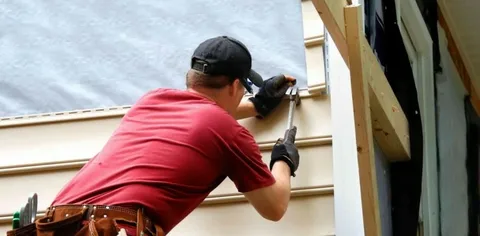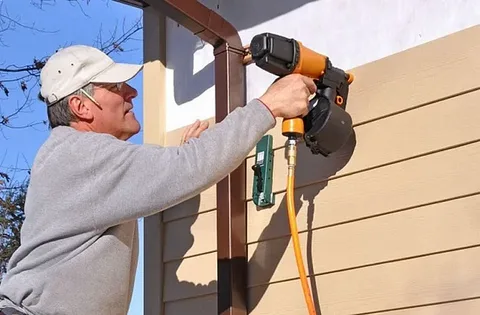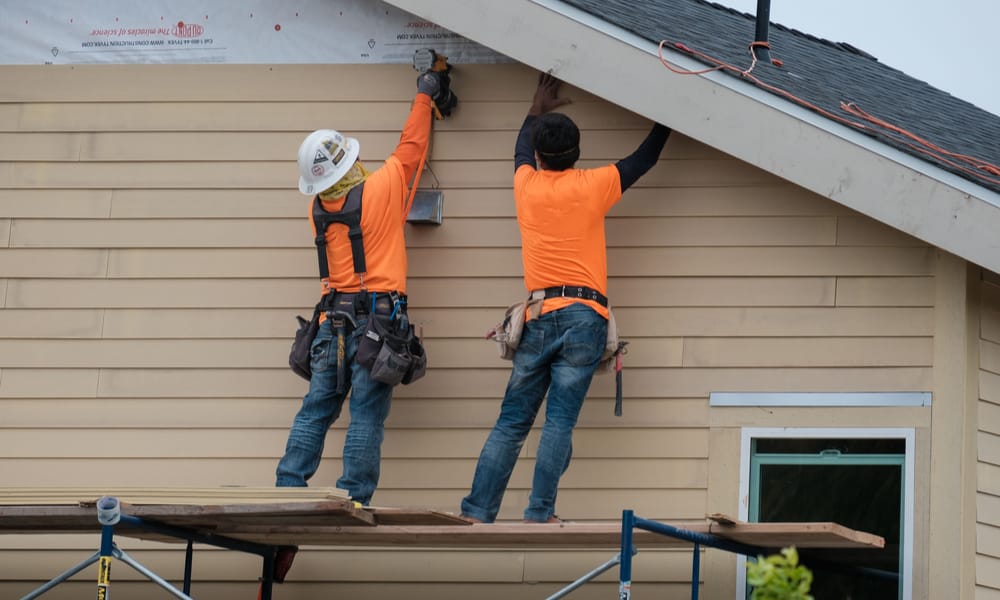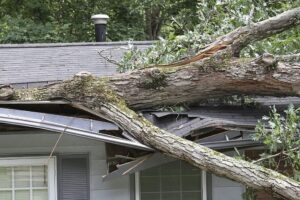Hey everyone, welcome back to the channel/blog! If you’re a homeowner planning to give your house exterior a fresh upgrade, today’s topic is just for you. We’re diving deep into common siding installation mistakes—the kind that cost you time, money, and sometimes even your home’s structural integrity. Stick around till the end, because I’ll also share how a professional like Atlas Roofing & Restoration can help you avoid all this hassle.
Why Siding Installation Matters
Before we get into the mistakes, let’s quickly understand why siding is such a big deal. Your siding isn’t just there to look pretty—it acts as a shield against weather, moisture, and pests. When installed properly, it boosts your curb appeal and energy efficiency. But poor installation? That’s an open invitation to leaks, mold, and long-term damage.
1. Not Preparing the Surface Properly
Let’s start with the first big mistake: skipping proper wall prep.
Too many DIYers (and even some contractors!) skip this step. If the surface under your siding is uneven or not cleaned properly, the siding won’t sit flat. Over time, this can cause bulging, warping, and even gaps that let in moisture.

Make sure the wall is clean, dry, and flat. Check for rot or mold before you start installing any siding.
2. Ignoring the Weather Conditions
Would you paint your house in the middle of a snowstorm? No? Then don’t install siding in extreme weather either.
Too hot? Vinyl siding can expand too much.
Too cold? It becomes brittle and prone to cracking.
Too wet? You’re just trapping moisture behind the siding.
Weather matters. Plan your project during mild conditions, preferably spring or early fall, for best results.
3. Using the Wrong Nails or Nailing Technique
Here’s a mistake I’ve seen more times than I can count: using the wrong nails or nailing them too tightly.
Vinyl siding, for example, needs to expand and contract with the weather. If you nail it down too tight, there’s no room for movement, and it will buckle. And if you use nails that are too short, they might not even anchor into the studs, making the siding vulnerable to wind damage.
Use corrosion-resistant nails, and leave a tiny gap between the nail head and the siding to allow movement.
4. Failing to Install a Weather-Resistant Barrier
Siding is not your only line of defense.
Underneath your siding, there should be a weather-resistant barrier like house wrap or felt paper. This layer helps prevent moisture from getting into your walls, especially during heavy rain.
Some DIYers think it’s okay to skip this step—big mistake. Water always finds a way, and once it’s trapped behind siding, you’re dealing with rot, mold, and structural damage.
5. Skipping Flashing Around Openings
Think of flashing like the trim on a waterproof jacket—it seals off weak points.
Windows, doors, and roof intersections must be flashed properly. Without it, water can easily sneak in behind the siding, especially during storms.
Use both metal flashing and a high-quality sealant to create an effective barrier.
6. Overlapping Seams the Wrong Way
Siding often comes in panels that need to overlap. Done correctly, it looks seamless. Done wrong? You’ve got visible joints and water intrusion points.
Always make sure the upper panel overlaps the lower one, and that each joint is staggered. Also, face the seams away from high-visibility areas if you can.
7. Not Leaving Enough Expansion Gap
Different siding materials behave differently in varying temperatures. Vinyl and wood siding, in particular, will expand and contract.
If you don’t leave enough space (usually about 1/4 inch) between panels or at the ends, they’ll press against each other and warp. And let’s be real—warped siding looks bad.
8. Installing Siding Too Close to the Ground
I get it—you want a clean, uniform look. But siding should never touch the ground. Why? Because it wicks up moisture like a sponge. That moisture leads to rot, mold, and insect problems.
Leave at least 6 inches of clearance from the ground. If you’re dealing with snow in winter, go a bit higher.
9. Poor Planning Around Corners and J-Channels
The corners of your house are stress points—both visually and structurally. Improperly aligned siding at the corners not only looks sloppy but can also let in wind and rain.
And don’t forget J-channels—those are the trim pieces that go around windows, doors, and eaves. They need to be installed snugly and correctly to ensure a polished, leak-free finish.
10. Going the DIY Route Without Enough Experience
Look, I’m all for DIY when you know what you’re doing. But siding isn’t as simple as it looks. It requires precision, planning, and a good understanding of how your home reacts to weather and moisture.
One small mistake can cause long-term damage to your home’s exterior—and even the interior.
So… Should You DIY or Hire a Pro?
If you’re thinking, “Wow, there’s a lot to mess up here,” you’re not wrong. Siding is one of those projects where professional installation is absolutely worth the investment.

Hiring a pro ensures your siding is weather-tight, energy-efficient, and visually appealing for years to come.
How Atlas Roofing & Restoration Can Help
This brings me to a team I absolutely trust: Atlas Roofing & Restoration.
Based in Northeast Ohio, Atlas specializes in siding, roofing, storm restoration, and exterior upgrades that last. Their crews are licensed, experienced, and they know exactly how to avoid every single mistake I mentioned today.
What sets them apart?
- They use top-quality materials
- They follow code-compliant practices
- They inspect and prep the structure thoroughly before starting
- They’re honest, professional, and transparent from quote to final cleanup
Whether you’re dealing with storm damage, upgrading your exterior, or just want a reliable pro to get the job done right, Atlas Roofing & Restoration has your back.
Final Thoughts
To wrap things up—yes, siding can dramatically transform your home. But only when done right. Avoid the common pitfalls, plan ahead, and don’t cut corners. If you’re not 100% confident in your abilities, don’t worry—you don’t have to do it alone.Give Atlas Roofing & Restoration a call. Let the pros handle the siding, while you sit back and enjoy the results.




